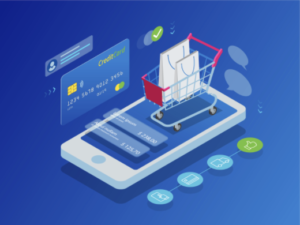According to Digital Commerce 360, US eCommerce grew 44% in 2020, and online spending accounted for 21.3% of total retail sales. This jump in online spending shouldn’t come as a surprise. The shift to digital shopping was a natural outcome of a global pandemic that forced everyone to retreat to their homes, but eCommerce had already been increasing steadily for a number of years.
Companies that remain complacent about eCommerce are at risk of being left behind. And we’re not just talking about retail sales. B2B has been keeping pace with online transactions in the US predicted to reach $1.8 trillion by 2023, accounting for 17% of all B2B sales in the country.
To remain competitive in an increasingly digital world, companies will need to follow the growing eCommerce trend. In the first installment of this two-part series, we talked about how you can increase your online presence to reach a broader customer base. Below, we share what you can do to drive your online sales.
Offer Subscriptions
Subscription-based shopping has grown 100% annually for the past five years. Subscriptions provide ease and convenience for your customers, help your brand stay top of mind, and provide predictable recurring revenue for you.
Instill Urgency
Limited time offers and limited stock both create a sense of urgency and can significantly boost sales. Scarcity and the fear of missing out on a good deal are excellent motivators. Limited offers can also increase perceived value and instill a sense of exclusivity, both of which can drive a customer.
Leverage Your Existing Audience
You already have a captive audience of existing customers and/or email subscribers. Offer them exclusive discounts or promotions they cannot get anywhere else. Personalize your offers and make product recommendations based on previous purchases. Offer rewards with every purchase that can be redeemed on future purchases. All of this can drive repeat sales and build customer loyalty.
Optimize Product Descriptions
Go beyond a simple description and product specs. List all the features and benefits. Include multiple product views and give your customer a rich experience so they can make a confident buying decision on the spot. Check out these best practices for writing eCommerce product descriptions.
Increase E-commerce Search Usability
Design a high-performance search experience for your site visitors so they can quickly and easily find what they are looking for. Organize your navigation and menu bar with categories and easy-to-use sections to enhance the experience for customers who want to browse. Include easily viewable thumbnails in search results.
 Optimize Shopping Cart Functionality
Optimize Shopping Cart Functionality
Make the checkout process as streamlined and easy as possible—the fewer the clicks, the better. Remove all distractions from the check-out page that may cause confusion and lead the customer to abandon their cart.
Build and Leverage Email Lists
Use sign-up forms or sign-up fields at the end of your blog posts or buying guides, in the footer or header of your website, and offer a discount or promo code in exchange for entering their email. Include an option to join your mailing list as part of the checkout process. Send regular emails or newsletters to your list. Promote new products, offer discounts, provide helpful tips, and create special campaigns exclusively for your email subscribers.
Hire a Pro
If creating and implementing an eCommerce strategy is beyond your team’s capabilities, then hire an agency with digital marketing experience that understands the latest trends in digital marketing and the latest technology. The investment will save you time and missed opportunities.
If you are not satisfied with your eCommerce or digital advertising, we can help. We are a digital marketing agency with deep knowledge and experience in eCommerce across multiple industries. Contact us today and learn how we can help your online business grow.








